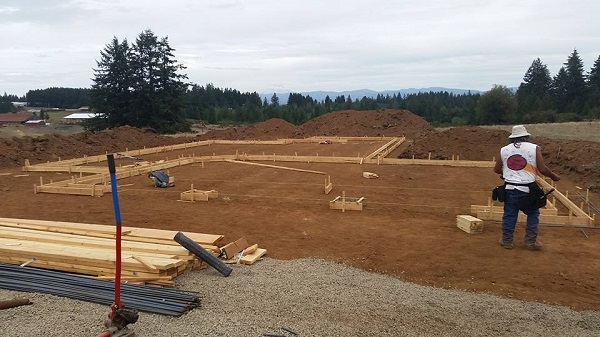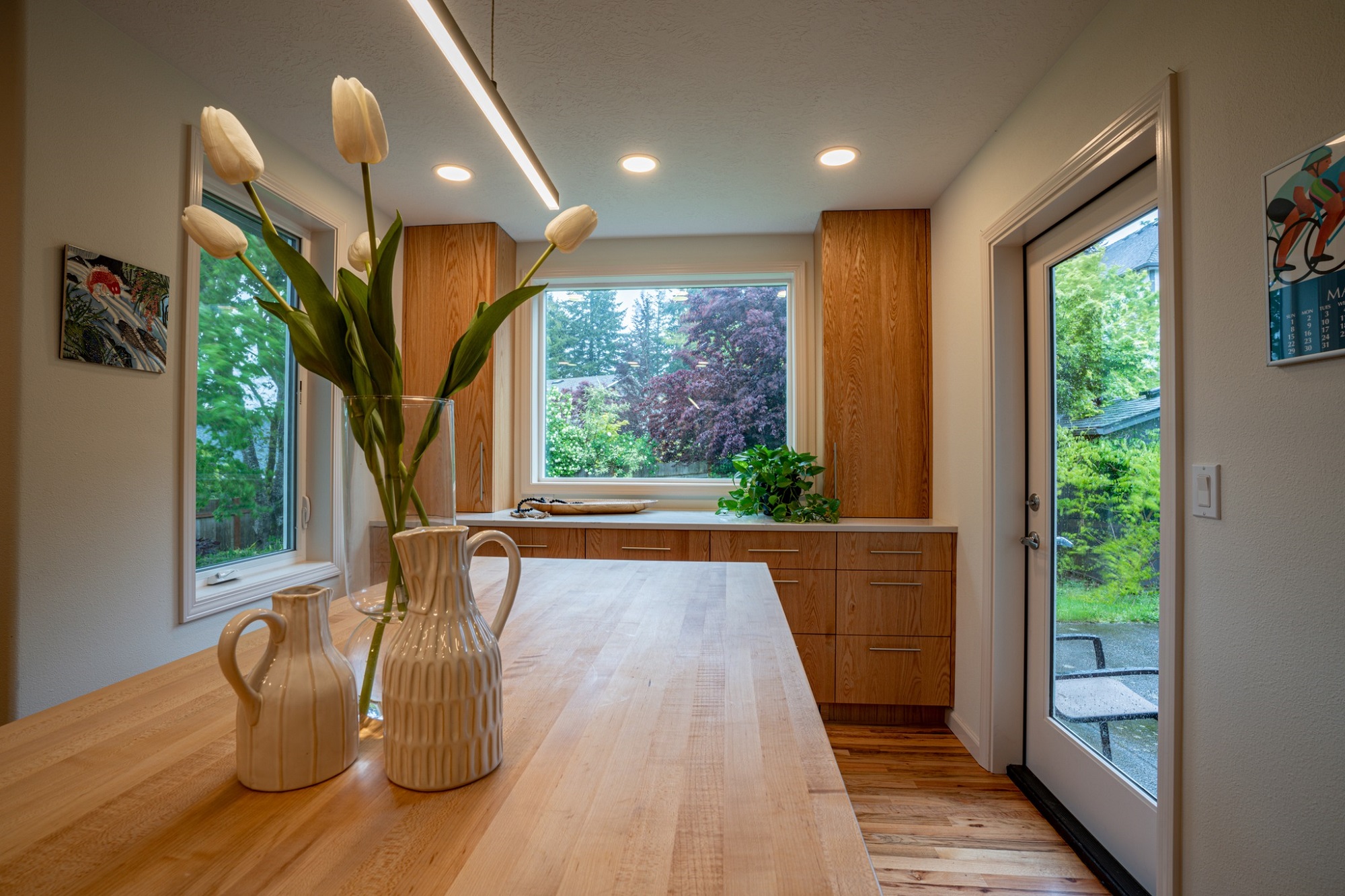Essential Considerations and Expert Tips for a Successful Home Construction Journey
When building a house, start by establishing a realistic budget that accounts for construction costs, land acquisition, and permits. Choosing the right land is crucial; consider factors like location, safety, and convenience. Assemble a competent team of home builders to ensure reliable management throughout the process. Pay attention to room sizes, styles, and efficient traffic flow. Don’t overlook material selection—opt for durable and energy-efficient finishes to save money long-term. Lastly, plan your outdoor space effectively to enhance overall property value. Each decision shapes your newly-built home; explore these considerations further for a smoother construction experience.
Establishing Your Budget
Establishing your budget is a critical first step in the home-building process. When you’re building a home, it’s vital to understand the costs involved.
Beyond just the building expenses, you’ll need to account for land acquisition, permits, and furnishings, all of which can significantly impact your total budget. Be honest with yourself about what you can afford; striking a balance between your aspirations and financial reality is key.
Additionally, it’s important to factor in potential contingencies, as unexpected expenses often arise during construction. A good rule of thumb is to set aside an additional 10-20% of your overall budget to cover unforeseen costs, such as changes in material prices or delays in the construction timeline. Researching and obtaining quotes from various contractors and suppliers can also help you gauge a realistic budget, as prices can vary significantly. Moreover, consider consulting with a financial advisor or a builder who has experience in your local market; they can provide insights into the nuances of budgeting for a home and help you identify any hidden costs that you may not have initially considered. By taking the time to establish a comprehensive budget, you can move forward with confidence and avoid financial strain as you embark on the exciting journey of building your new home.
Careful budgeting sets the foundation for your successful home-building journey.
Choosing the Right Land

Finding the right land for your new home is a crucial step that can significantly impact your overall satisfaction with the property.
Start by evaluating the location; consider how far you’ll need to commute to work or school, as even an extra 20 minutes can add up to significant time lost weekly.
Balance affordability with convenience; land in less populated areas might be cheaper, but it could lead to longer commutes that affect your lifestyle.
Don’t overlook safety—use resources like SpotCrime to assess crime rates in different neighborhoods.
Finally, prioritize your lifestyle preferences. Whether you seek tranquility or vibrant amenities, your chosen location should align with your vision for your new home.
Choose wisely, and you’ll enjoy the benefits for years to come.
Assembling Your Home Builders Team
How do you ensure your home-building experience runs smoothly? Assembling a skilled team of home builders is crucial. Start by hiring a reputable architect who understands local regulations and can create designs that align with your vision.
Here are key steps to consider:
- Interview at least two architects.
- Check references to verify their reliability.
- Ensure all professionals have valid licenses and insurance.
- Discuss your home design preferences clearly to make sure they can match your vision.
- Establish communication channels to address issues promptly.
Determining Each Room Space, Square Footage, and How They Blend Together
After assembling your team of builders, the next step involves carefully determining each room’s space and square footage to create a harmonious layout.
Start by considering the average home size of 1,500 to 2,500 square feet. Living rooms typically range from 200 to 400 square feet, while bedrooms should maintain a minimum of 80 square feet for functionality.
If you’re aiming for a larger-than-average home, it’s important to thoughtfully allocate additional square footage to key areas that enhance comfort and functionality. For instance, consider expanding the living room to 500 square feet, allowing for spacious seating arrangements and the possibility of integrating entertainment features such as a home theater system. Bedrooms could also benefit from increased space, with master suites ranging from 200 to 300 square feet, providing room for a sitting area, larger closets, and en-suite bathrooms. Additionally, spaces like the kitchen and dining areas can be expanded to create an open-concept design that fosters social interaction and family gatherings. This approach not only improves the flow of the home but also adds value and appeal, making it a more inviting environment for both residents and guests.
Incorporating high ceilings into the design can further enhance the sense of space and light within the home, making it feel even more expansive. Standard ceiling heights often range from 8 to 9 feet; however, opting for ceilings that rise to 10 feet or more can create a dramatic effect, especially in communal areas like the living room and dining room. This vertical dimension allows for larger windows that can flood the space with natural light, promoting a warm and inviting atmosphere. Additionally, high ceilings provide the opportunity for decor options such as crown molding, large-scale artwork, or statement light fixtures, which can serve as focal points and enhance the overall aesthetic of the home. When paired with an open-concept layout, these features not only elevate the design but also contribute to a greater sense of connectivity between different living areas, encouraging a harmonious flow that is ideal for both daily living and entertaining.
Embrace open floor plans to enhance natural light and promote cohesive flow between the living, dining, and kitchen areas. Align room dimensions and architectural features to avoid visual disconnection and ensure your traffic flow is efficient—hallways should be at least 36 inches wide.
Choosing Your Style
Choosing a style for your new home is a critical step that can significantly influence its overall aesthetic and functionality.
Before diving into the design phase, take the time to identify what resonates with you. Here are some key considerations when choosing your style:
- Explore various architectural styles like contemporary, farmhouse, or craftsman.
- Utilize platforms like Pinterest for inspiration and to clarify your design preferences.
- Consult with an architect to ensure your vision aligns with structural possibilities.
- Consider involving an interior designer to balance aesthetics and costs effectively.
- Remain flexible, as the design phase may extend with adjustments.
Navigating the Build Process
Once you’ve settled on a style for your new home, the next phase involves navigating the build process, which requires careful attention to detail and a clear understanding of your needs.
Start by assessing your construction timeline—home building can take several months to over a year. Proper site preparation is vital, as it sets the foundation for your dream home.
Collaborate closely with general contractors to establish realistic expectations and ensure compliance with local regulations. Be prepared for inspections at various stages, as these are crucial to avoid costly delays.
Maintain open communication with your team to address any issues promptly, allowing you to stay on track and manage your budget effectively throughout the construction journey.
Do You Need Home Builders?
When you choose us, you’re not just building a house; you’re creating your dream custom home.
Selecting Materials and Finishes
When selecting materials and finishes for your new home, focusing on durability and low maintenance is crucial to ensure long-term performance and cost-effectiveness.
Here are some key considerations:
- Choose durable materials for high-wear areas like flooring and countertops.
- Opt for energy-efficient finishes to reduce utility costs and enhance sustainability.
- Research long-term maintenance requirements to avoid unexpected future expenses.
- Use online estimation tools to calculate potential costs and stay within budget.
- Ensure compliance with local building codes to prevent delays and added expenses.
Outdoor Space Considerations
Creating inviting and functional outdoor spaces can significantly enhance your home’s appeal and value. When planning these areas, consider features like patios and decks, as well as professional landscaping, which can boost your home value by 10-20%.
Allocate a budget for exterior elements, including driveways and fencing, to improve both aesthetics and functionality. Engage landscapers early to design outdoor spaces that enhance curb appeal while accommodating future plant growth.
Be mindful of local climate conditions when choosing quality materials and native plants that require less maintenance and water. This thoughtful approach not only reduces upkeep but also fosters sustainability, ensuring your outdoor spaces remain beautiful and functional for years to come.
Star Builders Will Help Navigate Your Home Building Journey from Start to Finish
How can you ensure a smooth and enjoyable home-building experience?
Collaborating with Star Builders can streamline the entire construction process, making it tailored to your needs. Here are five key benefits of working with us:
- Expert Guidance: Receive insights from experienced professionals throughout the building process.
- Turnkey Operation: Enjoy a seamless experience with all contractors managed under one roof.
- Custom Design Options: Create a home that reflects your personal style and preferences, avoiding compromises.
- Timely Execution: We carefully plan each stage to minimize delays and unexpected costs.
- Stress-Free Experience: Our team prioritizes clear communication, ensuring you’re involved every step of the way.
Do You Need Home Builders?
When you choose us, you’re not just building a house; you’re creating your dream custom home.
Visit our About Us page for more information about our home building company.

